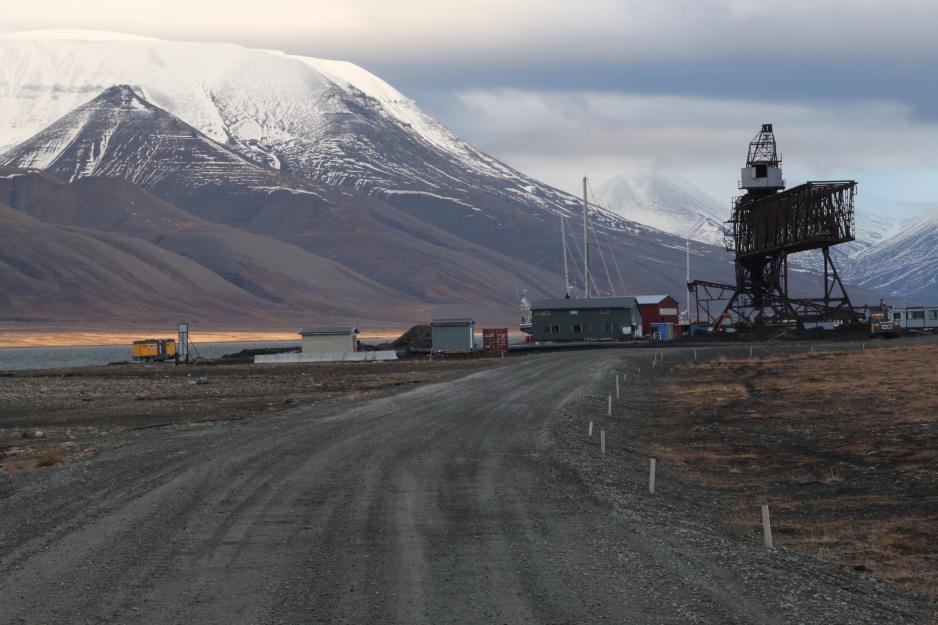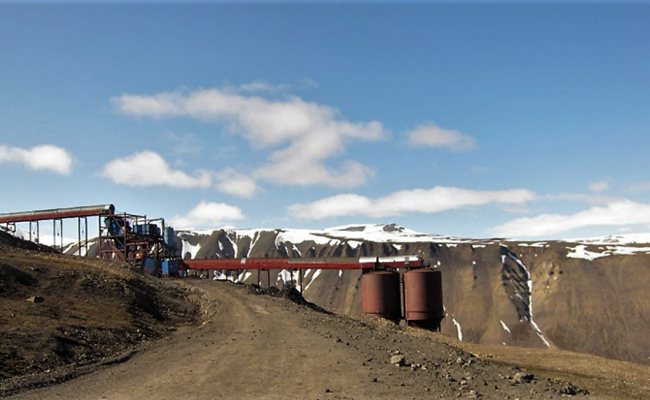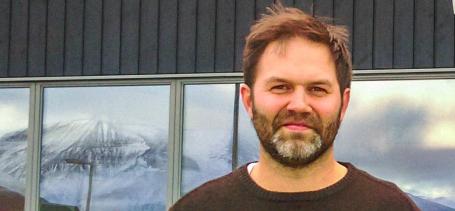So Far, No Plan for Alternative Svalbard Energy Supply

Solution urgently needed: After a massive influx of melt water in mine 7 at Svalbard last June, the mining company Store Norske has worked diligently to empty the mine of water. The mine is still not in operation and it is the only source of power and heating for Longyearbyen. Picture from the coal dock in Longyearbyen. (Photo: Arne O. Holm)
Mine 7 in Svalbard is still not in operation and the coal-fueled power plant only holds enough coal to supply Longyearbyen with energy for six months. As per today, there is no clear backup plan for energy supply for this vulnerable community.
Mine 7 in Longyearbyen, Svalbard collapsed last June when melt water made a massive influx in the mine, which is still not operational. The local coal power plant holds only enough coal to operate for six months of supplying Longyearbyen with power and heating.
After this, there is no clear plan for further energy supply to Longyearbyen if mine 7 were to not be back in operation by October, as the Store Norske mining company is hoping for. At least there is not plan known to the public.
The mine was scheduled to operate until 2038. However, the mine 7 collapse demonstrates how vulnerable the system is for climate changes, and how important it is to establish a more permanent solution.
No concrete plans
It has already been decided to build a new energy system, however, he Norwegian Ministry of Oil and Energy (OED) has not announced any concrete plans.
The last official document in this case dates back to July 2018, and it is a feasibility study conducted by Thema and Multiconsult on behalf of OED. The study lists the most likely solutions for a new energy system in Svalbard once mining has been shut down.
Communications Advisor Peder Qvale of OED cannot say anything about the process with a new energy solution for Longyearbyen so far:
“There are still internal processes going on in this case, and there will be for quite some time ahead”, Qvale says to High North News when asked about the current status of the ongoing work of establishing alternative power supply for Svalbard.
“Previously, we have had assessments of various alternatives. We have recently had an assessment of current conditions of the power plant conducted, which provided important input for the further work on new energy supply. OED is now working on several aspects of this case, with assistance from the Norwegian Directorate for Waterways and Energy (NVE)”, Qvale continues.
“Too soon to tell”
When HNN asks NVE about the same, they refer to OED for further information.
Qvale adds that other ministries are also involved with the process.
We run our own processes where secure energy supply is the main priority.
“A new energy solution must be secure, sustainable, cost efficient an realistic, and it must be possible to realize within the realization time perspective set by the current power plant. That is probably the most detailed answer I or anyone else in the Ministry can give at present”, says Qvale.
Can you say anything about what solutions you are considering?
“Sadly, no. It would be premature to say anything about that”, Qvale says in closing.
Also read
Outdated
Today, Longyearbyen is provided with power and heating from Norway’s only coal power plant, Longyear Energy. And from a climate perspective, coal is not a good solution. Nor is it cheap.
Operating costs for the coal power plant up until 2038 is estimated at NOK 1.8 billion. And withing the space of 10-20 years, both the biggest power customers in Longyearbyen appear likely to disappear; mine 7 and the coal power plant combined account for 30 percent of consumption.
The Longyear Energy facilities were built in 1982 and are about to expire. For instance, when a kettle recently came to a halt, the entire production stopped. That, in addition to the mine 7 collapse, says something about how vulnerable the supply chain is.
Wants diesel
Arild Olsen (Labor), Chair of Longyearbyen Local Council, wants to phase out operations long before the scheduled operation halt and argues that could be done by transitioning to diesel as a secure source of energy supply for Longyearbyen over time.
“This will provide immediate effect and is the first step towards a more environmentally friendly future solution. Diesel is not a breather, on the contrary”, Olsen says.
“We have pointed out this issue to the government for years. It was finally included in a 2016 white paper, resulting in a report from OED, and perhaps we see an end to this now”, Olsen says.
He argues that despite upgrades, depending on a 36-year old coal power plant is not sustainable, despite there being maintenance plans in place in order to keep going until 2038.
Own processes
“We are talking about NOK 1.8 billion in operation costs until 2038. And the present energy supply does not allow us to utilize renewable energy, nor can we scale operations according to the actual energy demand.”
The local council has not received any signs from central authorities about when their report may be ready.
“We are excited about the final report from OED and will of course work constructively with that; however, we also need to control the current power plant. Thus, we are also running our own processes”, the Chair of the Local Council says to High North News.
“Meanwhile, we run our own processes in which secure energy supply is the top priority.”
The alternatives assessed in the Thema and Multiconsult assessment are:
- Establishing a power cable from the Norwegian mainland
- A combination solution with wind and gas power
- A combination solution with solar and gas power
- A combination with wind, solar and hydrogen power
- A combination with wind, solar and battery power
- Pellets
- Gas power with and without the current CO2 capture and storing
- Bio-coal
- Continuing current coal power with and without CO2 capture and storing
This article was originally published in Norwegian and has been translated by HNN's Elisabeth Bergquist.





